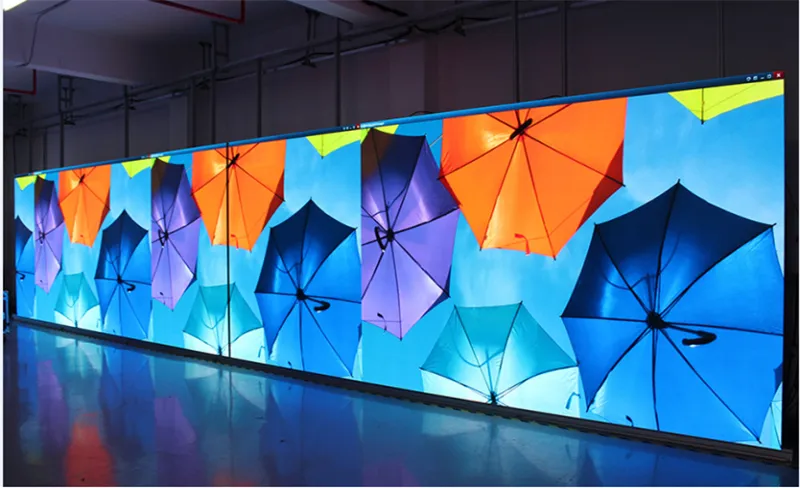LED Display Detailed Content and Cost Accounting of Auxiliary Materials
1. Specific Composition of Auxiliary Materials
Auxiliary materials in LED display projects are diverse and indispensable, including various LED modules, wires, and wire ducts. Modules are the basic components for realizing the functions of the display. Different displays require different functional modules. Wires are responsible for the power and signal transmission between components. Due to the large current during the operation of the display, the specifications and quality requirements for wires are high, and relatively thick wires are needed to ensure the stability and safety of power transmission. Wire ducts are used to organize and protect wires, prevent damage, make the wiring neat and beautiful, and facilitate later maintenance and management.
2. Basis for Cost Accounting
When accounting for the cost of auxiliary materials, multiple factors need to be comprehensively considered. Taking wires as an example, the cost of wires is affected by fluctuations in the copper market price, and high – quality wires have higher costs. The cost of various modules depends on their functions, brands, and market supply – and – demand situations. The cost of wire ducts is affected by materials and specifications. Generally speaking, the cumulative cost of these auxiliary materials can reach several hundred dollars, all of which are actual expenses. When quoting to the customer, we need to clearly list the specific items and costs of the auxiliary materials.
Optimization of Computer Configuration and Quotation Strategy
1. Reasons for Configuration Optimization
When configuring computer equipment for customers, we can reduce costs through reasonable optimization without affecting the normal operation of the system. Nowadays, most LED display control systems come with built – in graphics card functions. When matching a computer for the customer, the purchase of an independent graphics card can be omitted, which not only reduces the cost of computer procurement but also avoids potential system failures caused by graphics card compatibility issues.
2. Other Configuration Requirements and System Selection
The requirements for other computer configurations are relatively lenient. In terms of hard – drive capacity, 256GB or more can meet the storage needs of the LED display control system. In practical applications, the data stored by the system mainly includes the cache of display content and some basic system setting files, with a relatively small amount of data. In terms of the CPU, an Intel Core i3 series or an AMD processor with equivalent performance can meet the requirements. This is because in the LED display system architecture, the DVI output is realized by the built – in graphics card of the control system, and the computer mainly undertakes the auxiliary work of information transmission and does not need to perform a large amount of complex data processing. In terms of system selection, operating systems with high reliability and stability, such as Windows 10 Professional Edition, are preferred to ensure the long – term stable operation of the LED display system.
Comprehensive Consideration of Debugging Fees and Quotation Communication
1. Necessity of Charging Debugging Fees
Debugging fees are an important part of the LED display project quotation. When dispatching professional technicians to the site for debugging work, corresponding labor debugging fees should be charged. Debugging work requires technicians to have rich experience and skills to ensure that the display can operate normally and achieve the best display effect. During the debugging process, technicians need to accurately adjust various parameters of the display, check the stability of component connections, and test the playback effect of the display content.
2. Risk Factors Included in the Fees
Debugging fees not only include labor costs but also cover potential risk costs. If a technician makes a mistake during debugging and causes equipment damage, we cannot shift the cost of equipment repair or replacement to the customer. We need to bear the economic losses, including equipment repair costs, replacement part costs, and possible additional costs due to project delays. There are also various uncertainties at the debugging site, such as complex site environments and unstable power supply, which increase the difficulty and risks of debugging. Therefore, when quoting, we need to fully consider these risk factors and reasonably determine the debugging fees.
3. Negotiation Strategies with Customers
In wholesale business scenarios, some customers may be sensitive to debugging fees. When a customer raises objections, we need to communicate and negotiate fully with the customer. On the one hand, we can explain to the customer the necessity of debugging fees and the cost components included, so that the customer understands that this is a necessary expense to ensure the smooth completion of the project. On the other hand, we can also appropriately adjust the debugging fees according to the customer’s specific situation and project scale. For example, if a customer requests a discount, we can reduce the debugging fees to 5%. Or negotiate with the customer not to conduct on – site debugging but to install and debug the display panel in the company, and the customer can disassemble and take it away by themselves.
I’m tired of reading words. Let’s listen to this.
Related Courses
- Shanghai HARSELED Expands Global Reach with New Branch Office in Cambodia
- How to Choose the Best Indoor LED Display Screen for Advertising in 2025
- Transparent LED Display
- 3D Digital Billboards
- Electronic LED Billboards
Join us and become our distributor

